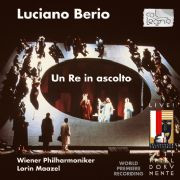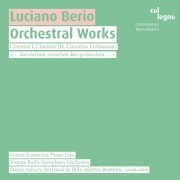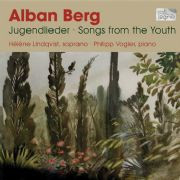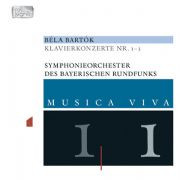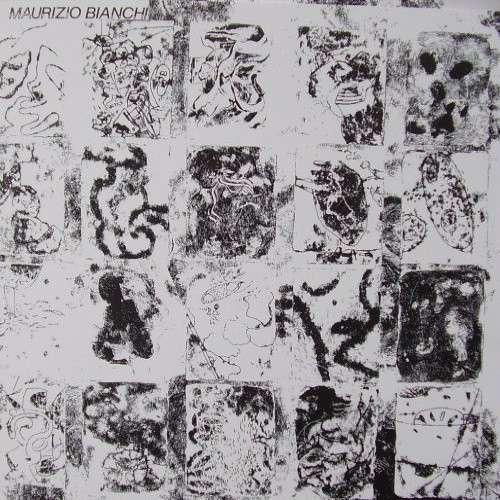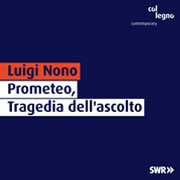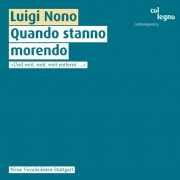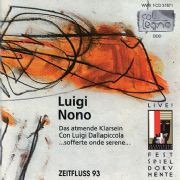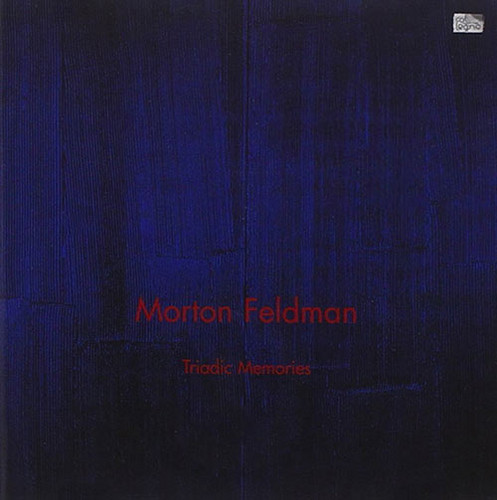Reissues
Concerto for Prepared Piano and Chamber Orchestra / Sixty-Eight
For each of his compositions for prepared piano Cage created a specific piano preparation chart, setting out in meticulous detail the strings to be prepared, and the materials and manipulations to be used for preparing them. For the Concerto for Prepared Piano and Chamber Orchestra (1951), 53 tones of the keyboard must be prepared; and in this case Cage himself was astonished at the complexity of these preparations. The range of sounds is further expanded by an extra bridge installed in the pian…
Music For Percussion Quartet
As early as in 1942, in Credo in Us, Cage employed not only a percussion ensemble but also sounds from the radio and records. Therefore, quite in accordance with what the composer would have wished, the materials used by the Percussion Ensemble Mainz in this recording range from Beethoven's fifth symphony (vinyl record, including the rustling) to ABBA, Tina Turner and advertising slogans. It goes without saying that rhythms play an important part in music for percussion. Cage, though, was also i…
Sonatas & Inteludes
The sonata originated in the Baroque as a small, one-movement form, which nevertheless already contained the core of the sonata to be later developed and composed in elaborate detail by the Viennese Classics. In his Sonatas and Interludes John Cage stuck to the concise, one-movement form, thus establishing a link to Scarlatti and Bach's preludes as well as to Chopin's Préludes and Satie's piano pieces. Other than many of his later, freer works, these small but complex gems are fixed and noted do…
Orchestral Works & Chamber Music
A conductor enjoys the privilege of being able to reconsider his attitude to musical works over and over again. The composer Boulez adheres to the same maxim: of his own compositions he regards only very few as being finished; most of them are, to him, "work in progress." The first two pieces on this collage CD were actually withdrawn by Boulez after their premiere as he wished to think them over again. Later on, Polyphonie X (1951) in view of its extremely strict serial procedure appeared to hi…
Ekphrasis [Continuo II] / Coro
The renowned American architects Sullivan, Wright and Mies van der Rohe are the center of attention in the composition Ekphrasis [Continuo II], even though originally Berio had no such thing in mind: "While I was working on Continuo, it was not my intention to compose a metaphor for architecture, or write a homage to the famous Chicago architects... Neither did I refer directly to the amusing but nevertheless solid constructions by Renzo Piano... However, as the work progressed I became aware th…
Un Re In Ascolto
A king listens: its subtitle identifies Un Re in ascolto, this special combination of music and drama, as a "musical action by Luciano Berio and Italo Calvino". A dialogue between composer and writer, between different forms of theater – and also, if you like, between Shakespeare and Thomas Bernhard. And, indeed, he is a "Theatermacher", an impresario, this Prospero (Theo Adam), who is accompanied by the director (Heinz Zednik) and the actor "Friday" (Helmut Lohner) and to whom a musical and sce…
Orchestral Works
The second CD of col legno's Wien Modern Edition is dedicated to Luciano Berio, who throughout his life kept on searching for new sounds, and new instrumental and orchestral organizing principles in his work. His Sequences for solo instruments are among the most important landmarks in recent music; later on, Berio decided to "comment" on some of these notoriously complex solo works from an orchestral perspective. Chemins and Chemins IIb are adaptations of the Sequences for harp and viola. "The b…
Jugendlieder - Songs From The Youth
Berg's early lieder owe their existence largely to the young composer's great interest in literature; nevertheless it was his friend Hermann Watznauer, who actually inspired him to embark on composing his first lieder around 1900/01. And Berg enjoyed himself so much that he continued along the same lines until 1903, completing another 30 lieder; even Arnold Schönberg was essentially fascinated by them: "Berg's earliest compositions, however clumsy they may have been, already reveal two qualities…
Musica Viva 11
Today, the piano concertos by Béla Bartók are regarded as works of classic modernism and are considered suitable even for conservative audiences. Musica Viva, the concert series for contemporary music in Munich, included the piano concertos in their program back in 1957, a time when it was by no means a matter of course to hear this music in established concert halls. The man at the piano was one of the greatest of his trade: Géza Anda, a fervent and uncompromising advocate of Bartók's oeuvre, w…
Piano Pictures
Now, which are the points of contact between these two composing gentlemen? "In both composers, a childlike quality shows in their indifference (or impartiality) towards the utilizable musical material: 'sophisticated' and 'lesser' styles, ragtime and music hall, neo-gothic and bitonality, typing machine and doorbell, jocular or praising quotes – everything is linked with everything, without any previous weighing and selection, without preconditions, following a kind of anarchic play instinct. […
Mectpyo Bakterium / Genocide O.T.M.
Numbered edition of 600 numbered copies in a trifold 10" inch sleeve with original artwork. Re-issue of the Maurizio Bianchi's early Lp Mectpyo Bakterium . Included in this re-issue is a bonus disc with 55 minutes of ultra rare material officially published on CD for the first time here.Disc 1: First two tracks are from the 1982 LP 'Mectpyo Bakterium' released by DYS Records, USA. Third track is from '40 Days/ 40 Nights' compilation on Stratosphere Music, Japan. Fourth track is from 'Internation…
Bad Boy\'s Piano Music
George Antheil was not only always ahead of his time; he was also an alert contemporary and ready to take in all artistic trends of the first half of the 20th century. There was hardly a kind of music he wasn't aware of, hardly a madness he didn't take part in, and hardly a scandal he missed, or missed to cause. All his personal entanglements are certainly reflected in his compositions – and we wouldn't expect any less from him; but his continuing reputation as a genuinely unique character is ne…
Étude sur les Mouvements rotatoires / 24 Préludes
The master of partial tones: Ivan Wyschnegradsky continued Scriabin's harmonic principles and (successfully) searched for new tone colors.
Prometeo, Tragedia dell\'ascolto
One of the most significant musical works of the twentieth century is now available in an archive-quality recording. Only now, using surround-sound technology can the twenty-six channels be balanced out and distributed, spatially and dynamically, with minute accuracy across the five speakers: a time-consuming and fascinating task, evoking the optimist Sisyphus. With this double SACD, André Richard and Peter Hirsch’s team, who had already worked on the first performance of the then new Prometeo i…
Quando Stanno Morendo
Works of art are often triggered by private events. Sarà dolce tacere (1960), for example, was written on the occasion of the 40th birthday of Bruno Maderna, Nono's (former) teacher and close friend; and also in 1960 Nono wrote Ha venido for his daughter's first birthday. Djamila Boupachà (1962), ¿Dónde estás, hermano? (1982) and Quando stanno morendo (1982), on the other hand, are clearly expressions attributable to the politically involved, the committed cosmopolitan Nono.
Variazioni canoniche sulla serie dell\' op. 41 di Arnold Schoenb
"All my works always start out from a human incentive: an event, an experience, a text in our lives leads to my instinct and my conscience and wants me to bear witness, as a musician and as a man." This is how Nono, in 1960, described his motivation as a composer, the incentive inducing him to speak up through his music. His opus 1, the Canonic variations on the series of op. 41 by Arnold Schönberg, is based on the twelve-tone series used in Schönberg's composition; it actually takes effect in t…
Das atmende Klarsein
Researching into the fringe ranges of hearing, and actually going to the limits: electronics – live or prerecorded – was one of the tools employed by Luigi Nono in pursuance of this object. In his work Das atmende Klarsein he moreover endeavored to expand the ability of listening: "Waking up the ear, the eyes, human understanding, intelligence, is what is essential today," the composer, also a politically aware man, observed in the early 1980s. Das atmende Klarsein "is a key work of Nono's final…
Three Voices
This piece is sung by the Swiss “deep voice”, Marianne Schuppe in trio with herself, a feat made possible by playing back recordings of her own voice. This is not minimal music; melodic lines arise, sensual, beautiful, and undoctored, swaying like a lullaby, yet boosting the overall rhythmic intensity. There cannot be many works which demand of the soloist such careful timing, intense concentration and voice control.
For Bunita Marcus
For Bunita Marcus was written in 1985. "This work, which I have dedicated to Bunita Marcus, [...] deals with the death of my mother, and with the notion of a slow death. I simply didn't want the piece to die. So I used this unwillingness compositionally in order to keep the piece alive, like a patient suffering from an terminal disease, for as long as possible." (Feldman) It is not the loud raging, the last furious revolt of a dying human being that Feldman depicts here, but a slow nodding off a…
Triadic Memories
In other works, such as For Philip Guston, which continues for several hours, Morton Feldman actually would go beyond the bounds of possibility, also overtaxing the concentration of both his musicians and his audience. Nevertheless, like these other words Triadic Memories also requires contemplation, listening without restlessness. Though perhaps not intended by Feldman, a strong contemplative element is inherent particularly in this composition, settling like a haze on the tones that seep in sl…
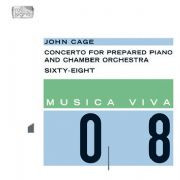
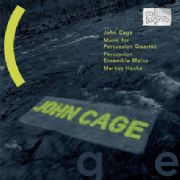
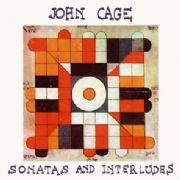
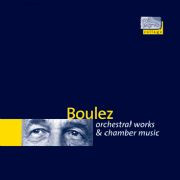
![Ekphrasis [Continuo II] / Coro](https://cdn.soundohm.com/data/products/013/luciano-berio-ekphrasis-continuo-ii-cor.jpg.500.jpg)
